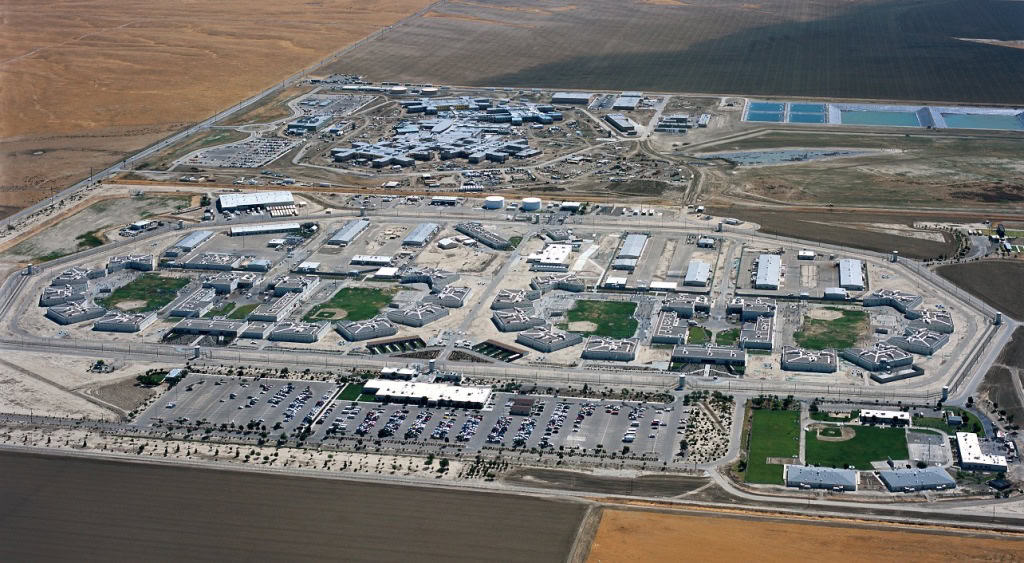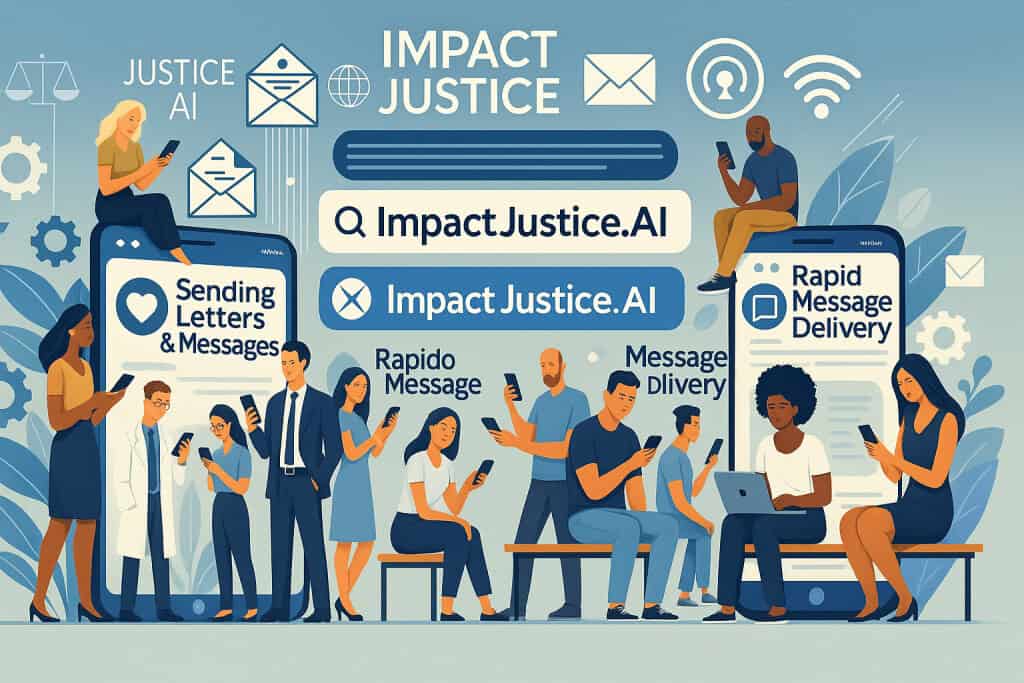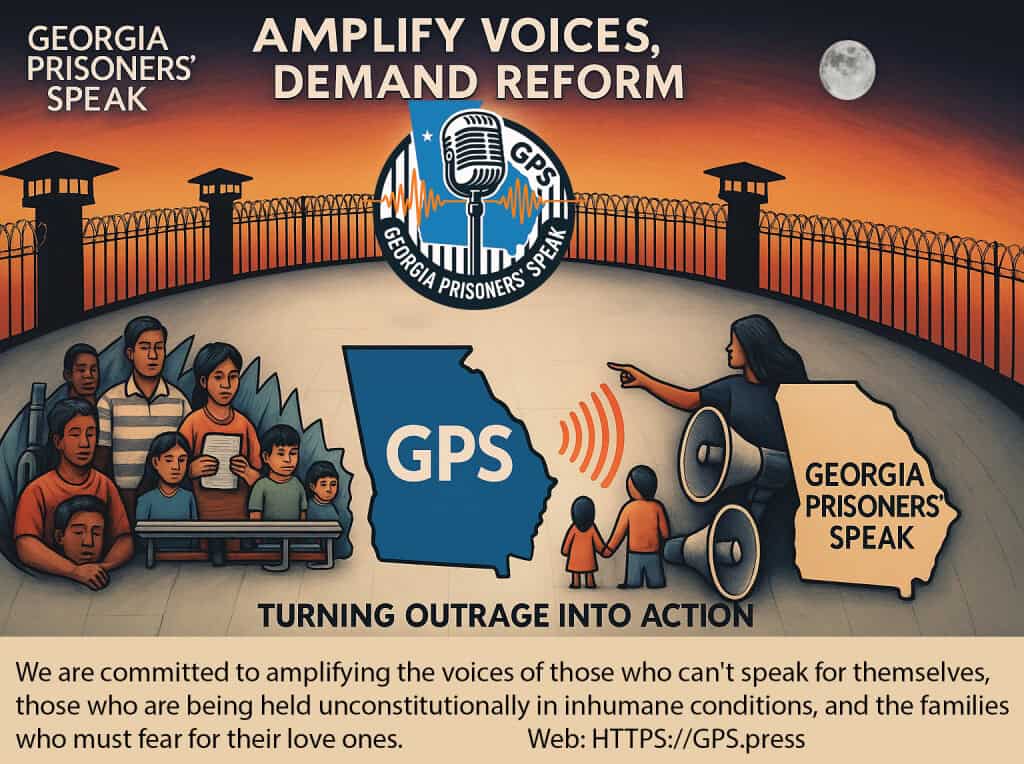If prisons are meant to make communities safer, then they must return people better than they found them.
Across the country, a quiet experiment in California is testing that simple idea — and it’s working.
The media has nicknamed it “Prisneyland.”
Inside Valley State Prison and soon the re-imagined San Quentin Rehabilitation Center, the California Department of Corrections and Rehabilitation (CDCR) is piloting what it calls the California Model — a Scandinavian-inspired, rehabilitation-first system built on education, work, and human dignity rather than punishment for punishment’s sake.
Unlike the hardened approach taking hold in Georgia — where the state is spending over $1.6 billion on new walls and isolation units 1 — California is investing a fraction of that, about $239 million, to transform its oldest prison into something radically different: a place designed to make both prisoners and communities safer.
What “Prisneyland” Really Means
“Prisneyland” isn’t a joke; it’s a glimpse of what accountability can look like when punishment and progress aren’t enemies. The nickname came from an NBC TODAY feature filmed at Valley State Prison, where incarcerated men study college courses, learn trades, and interact daily with staff trained as mentors instead of enforcers. One resident told the camera, “For the first time in my life, I feel human again.” 2.
Watch: A brief look inside California’s “Prisneyland” experiment — rehabilitation in action.
The California Model centers on five ideas:
1. Normalized living and community culture. Clean, bright spaces; consistent routines; pro-social expectations; and peer accountability.
2. Education and work as the foundation. College programs, trades training, and partnerships with nonprofits and universities.
3. Staff as coaches and mentors. Officers are retrained to guide behavior through communication rather than confrontation.
4. Violence reduction through purpose. Early reporting shows lower assaults and calmer facilities where both staff and residents feel safer.
5. System-wide transformation anchored at San Quentin. California’s flagship project includes single-room housing, classrooms, vocational shops, and café-style culinary training — an environment modeled directly after Scandinavian prisons such as Halden in Norway.

The Scandinavian Connection
Norway, Sweden, and Denmark treat imprisonment as a temporary loss of liberty — not a loss of humanity. Officers train alongside prisoners, share meals, and build trust. Their recidivism rates hover near 20 percent, compared with roughly 65 percent in the U.S. 3. When the CDCR studied those systems, it learned that dignity is security: when people have something to lose, they protect it.
California’s model applies that lesson. It isn’t “soft”; it’s smart. Officers report less stress, residents show fewer disciplinary infractions, and graduates of education programs are leaving with jobs instead of gang affiliations. As one correctional sergeant told PBS NewsHour, “We go home safer because this place runs on respect.” 4.
Cost: Hardening vs. Healing
Georgia’s Department of Corrections calls its billion-dollar construction plan “modernization.” California calls its $239 million San Quentin redesign rehabilitation. The difference isn’t just dollars — it’s philosophy.
- Georgia: $24 million for a 126-bed “hardened” unit at Hays State Prison; $451 million for a 3,000-bed new facility; hundreds of millions more for locks, cell-phone jammers, and surveillance.
- California: $239 million to re-purpose an existing prison into a college-like campus focused on education, vocational training, and reentry.
One system is spending more to contain people; the other is spending less to change them. If the goal of incarceration is public safety, the math is obvious. Rehabilitation reduces violence inside and recidivism outside. Concrete only postpones both.
A Model of Safety, Not Softness
Critics sneer at California’s “Prisneyland,” calling it soft. The data says otherwise.
At Valley State Prison, where the California Model has been piloted, the atmosphere is calm enough to measure: one death and only two use-of-force incidents in the most recent reporting year — essentially zero homicides and almost no serious violence 5.
Compare that with Georgia.
In 2024 alone, Georgia’s prison system recorded 333 deaths, more than 100 of them homicides, and—according to the Department of Justice’s findings—12 to 18 violent assaults for every homicide. That’s thousands of stabbings, beatings, and sexual assaults every year 6.
Two different philosophies, two radically different results.
California is proving that safety grows from structure, respect, and opportunity, not repression. Georgia keeps proving the opposite: that starvation, isolation, and neglect create chaos so violent that even officers are afraid to enter the dorms.
A California officer interviewed for NBC’s coverage said, “We go home safe because this place runs on respect.” In Georgia, correctional staff are walking off the job in record numbers, describing an environment where fear has replaced order.
Why It Works
The California Model’s success is rooted in purpose, not punishment.
Watch: A brief look inside California’s “Prisneyland” experiment — rehabilitation in action.
Residents are occupied in education and skilled work every day. Staff are trained to mediate conflict before it explodes. Nutrition, mental-health care, and family contact are built into the schedule. These are not luxuries — they’re security systems that work because they give people something to lose.
In Norway’s Halden Prison — the inspiration for San Quentin’s redesign — the director put it plainly:
“The punishment is the loss of freedom. Everything else is about preparing people to live safely in society again.”
That principle is the opposite of Georgia’s “hardened” strategy. There, the state is investing billions in walls that isolate people from change, while California is investing millions in programs that make change possible.
Hardening vs. Healing: The Real Cost of Safety
- When Georgia talks about “modernization,” it means concrete.
- When California talks about modernization, it means people.
The Georgia Department of Corrections (GDC) is spending more than $1.6 billion on new construction — including a $24 million “hardened” 126-bed unit at Hays State Prison, four smaller modules statewide, and a new 3,000-bed mega-prison in Washington County costing $451 million. Add in another $77 million for locks and electronics, $50 million for phone and drone jamming systems, and $86 million for emergency repairs, and it’s clear: Georgia’s leaders are betting that walls can do what people cannot 1.
California is spending a fraction of that — $239 million — to transform San Quentin into a rehabilitation hub modeled on the best Scandinavian systems. Instead of new cages, it’s creating classrooms, trade workshops, culinary training cafés, and single-room housing where people can study, work, and prepare to rejoin their communities safely.
$239 million to transform one of the nation’s oldest prisons into a center for hope — versus $1.6 billion to make despair permanent.
The difference isn’t just financial; it’s philosophical. Georgia is trying to manage violence with steel and surveillance. California is reducing it with structure and purpose.
The results speak for themselves:
- California: one death, two use-of-force incidents.
- Georgia: 333 deaths, over 100 homicides, thousands of assaults.
For the cost of a single new Georgia “hardened” unit, California is building spaces that make both prisoners and officers safer.
What Safety Really Costs
If the goal of prisons is to make communities safer, then every dollar should be spent on what works — food, education, and treatment. California’s approach recognizes that rehabilitation is public safety.
Georgia’s model — locking people away and hoping they disappear — only ensures they return more broken, more dangerous, and more traumatized than before.
When a person leaves prison malnourished, untreated, and uneducated, the community pays for it. When they leave healthy, skilled, and stable, the community gains security.
Safety doesn’t come from walls. It comes from investment in people.
What the U.S. — and Georgia — Can Learn from California
California’s “Prisneyland” may sound like idealism, but its results are measurable: fewer violent incidents, safer staff, and healthier communities. It challenges the false belief that punishment and safety are the same thing.
The California Model starts with a simple truth: people eventually come home. If prisons fail to educate, treat, and humanize them, then those failures return to every neighborhood in the state.
Georgia’s model begins and ends at the gate.
The state spends billions to contain people, then blames them when they leave unrehabilitated. It’s not just cruel — it’s reckless. Every preventable death, every act of violence, every reoffense after release is the result of a system designed to produce them.
California’s experiment proves that rehabilitation is not mercy — it’s maintenance of public safety.
Watch: A brief look inside California’s “Prisneyland” experiment — rehabilitation in action.
The Three Lessons Georgia Can’t Ignore
1. Treating people like humans makes everyone safer.
Valley State Prison’s near-zero violence didn’t happen by accident. It happened because staff and residents were trained to interact with respect and purpose. Compare that to Georgia, where dehumanization has become daily policy — and so has death.
2. Rehabilitation costs less than repression.
Georgia’s $1.6 billion could fund education, mental health care, and parole reforms for every facility in the state — programs proven to lower both costs and crime. California’s San Quentin transformation shows how far that same investment can go when it’s spent on growth, not confinement.
3. The goal isn’t to make prisons harsher — it’s to make communities safer.
When someone leaves prison with a trade, a degree, and a sense of self-worth, public safety grows. When they leave angry, malnourished, and untreated, violence continues — inside and outside the walls.
Rehabilitation Is Security
What California is building isn’t softness — it’s strength. It’s a model that understands safety is not created through fear but through connection and accountability.
By contrast, Georgia’s prisons have become symbols of the failure to imagine anything beyond punishment.
“The punishment is the loss of freedom,” says Tom Eberhardt, a Norwegian prison governor who helped inspire the California model. “Everything else should prepare people to live safely in society again.”
Georgia could adopt that same vision tomorrow. It could invest in nutrition, parole, education, and mental health instead of walls, weapons, and jammers. The blueprint exists — it just takes courage to follow it.
Prisneyland Is What Prison Should Be
If prisons are meant to make communities safer, they must send people home capable of living safely within them. The California Model is proof that rehabilitation works — for staff, for residents, and for the public.
Georgia, meanwhile, keeps proving that cruelty doesn’t.
Until states like Georgia choose reform over repression, their new walls will stand as monuments to failure, not justice.
Call to Action: Build Rehabilitation, Not Retribution
California’s “Prisneyland” is showing the nation that prisons can be more than warehouses of despair — they can be schools of transformation.
Georgia — and every other state still chasing “tough on crime” optics — has a choice to make: build walls, or build people.
Real reform doesn’t begin with concrete; it begins with courage.
Here’s what you can do right now to help shift the national conversation from punishment to rehabilitation:
1. Tell Lawmakers to Fund Education, Not Expansion.
Use ImpactJustice.AI to instantly send letters to your state legislators, the DOJ, and major media outlets demanding that funding prioritize rehabilitation programs, nutrition, and education over prison construction.

If California can create change for $239 million, Georgia can too.
2. Demand Oversight and Transparency.
Ask your state’s Department of Corrections to publicly release data on:
- Inmate deaths and violent incidents
- Education and mental health participation rates
- Food and nutrition budgets
Public safety depends on public accountability.
3. Support Programs That Work.
Volunteer, donate, or partner with reentry and education programs in your community. Every GED, every job certification, every college class behind bars is a victory for safety and humanity.
4. Share the Vision.
Share this story and the examples of Valley State Prison and San Quentin. Use the hashtags:
#Prisneyland #ReformNotRepression #PrisonReformNow #EducationOverIncarceration #BuildPeopleNotPrisons
Encourage local journalists, legislators, and educators to visit prisons that are proving reform works. Seeing rehabilitation in action changes minds — and policy.
5. Hold Leaders Accountable.
Remind every official that the purpose of prison is not punishment for its own sake. It is to make communities safer. That goal will never be met through starvation, isolation, or violence — only through education, nutrition, treatment, and opportunity.
Final Word
America has a choice to make.
We can keep building walls and calling it safety, or we can build people and call it progress.
“Prisneyland” isn’t fantasy — it’s the future.
It’s what prison should be.
Further Viewing & Related Reading
🎥 Watch More About the California Model
- NBC News: Inside California’s new prison model “Prisneyland”
- NBC News: Prisneyland Part II – From Punishment to Rehabilitation
- CDCR: California Model in Action at Valley State Prison
- CBS Reports: Model Prisons – California’s Push for Reform
- PBS NewsHour: How California’s New Prison Model Is Redefining Rehabilitation
📚 More from Georgia Prisoners’ Speak
- Georgia’s “Hardened” Solution: Another Fortress Instead of Reform
- Starved and Silenced: The Hidden Crisis Inside Georgia Prisons
- Parole: A Promise Broken — and How Georgia Can Make It Right
- Fixing Georgia’s Parole System: The Ultimate Plan for Justice
- The Second Chance Act
Key Takeaways
- California’s ‘Prisneyland’ showcases a rehabilitation-first approach in prisons focused on rehabilitation not punishment, utilizing education and work.
- The California Model supports normalized living, vocational training, and mentoring staff, contributing to safety and respect.
- In contrast, Georgia’s approach relies on confinement, resulting in higher violence and mortality rates in its prison system.
- Research indicates that treating inmates with dignity leads to lower recidivism rates, emphasizing that rehabilitation is vital for public safety.
- California’s investment in rehabilitation proves more effective and cost-efficient than Georgia’s billion-dollar construction for hardened prisons.

- Georgia’s “Hardened” Solution: Another Fortress Instead of Reform, https://gps.press/georgias-hardened-solution-another-fortress-instead-of-reform/[↩][↩]
- NBC TODAY segment, Valley State Prison California Model[↩]
- University of Oslo Criminology Dept. data on Nordic recidivism[↩]
- PBS NewsHour segment, California Model Prison Reform[↩]
- CDCR SB-601 VSP Report, https://www.cdcr.ca.gov/research/wp-content/uploads/sites/174/2021/06/2021-Q1-VSP-SB601.pdf[↩]
- DOJ Findings Report, https://www.justice.gov/d9/2024-09/findings_report_-_investigation_of_georgia_prisons.pdf[↩]

4 thoughts on “Prisneyland: What Prison Should Be”